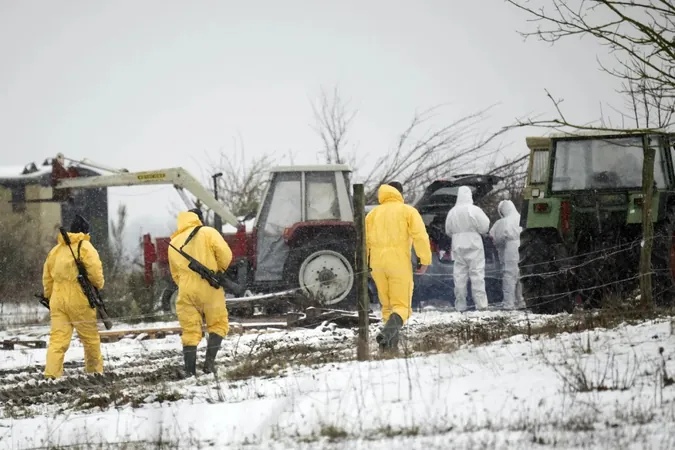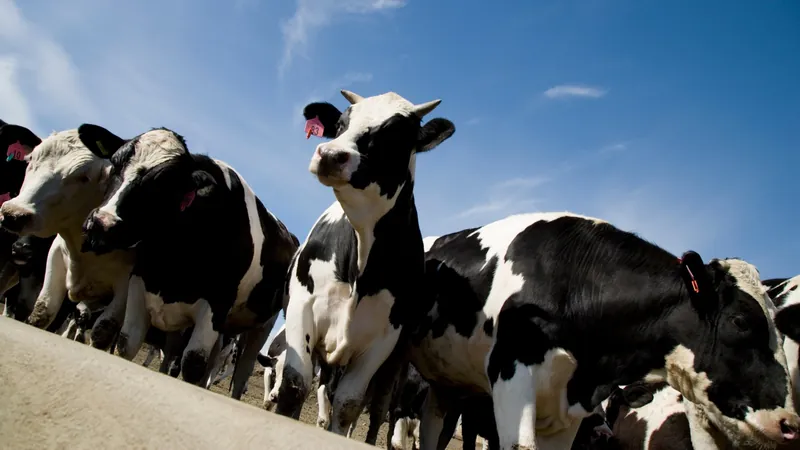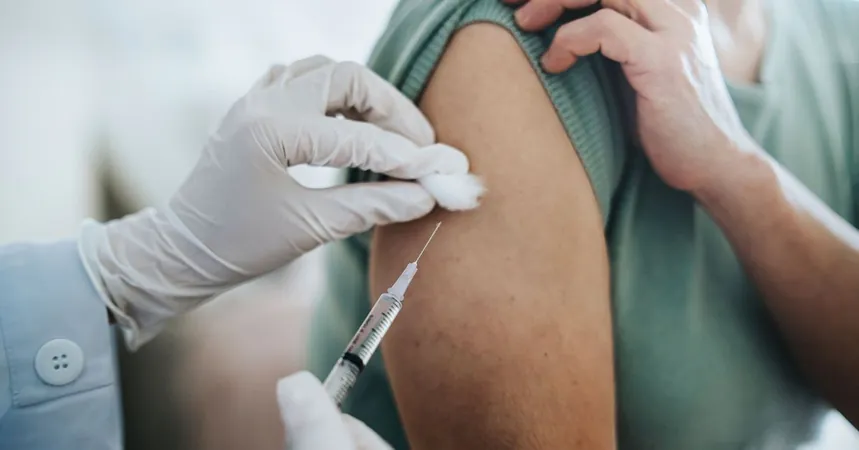
Urgent Animal Transport Ban in Brandenburg After Foot-and-Mouth Disease Outbreak! What You Need to Know!
2025-01-11
Author: Noah
Overview of the Situation
In a shocking development, animal transport has been strictly prohibited in Brandenburg, the German state surrounding Berlin, after the alarming discovery of foot-and-mouth disease in a local buffalo herd. This outbreak marks Germany's first encounter with the disease in over 35 years, prompting immediate action from health authorities.
Details of the Outbreak
On Friday, a farmer located just outside the city limits of Berlin found three out of a herd of 14 water buffalo dead in Hoenow, a town on the outskirts of the capital. Following the identification of the virus through testing by Germany's national animal health institute, the rest of the buffalo were quickly euthanized to contain the situation. Authorities are currently investigating the source of the virus, which has stoked fears across the agricultural sector.
Transport Ban and Precautionary Measures
As of Saturday, a 72-hour ban has been enacted on the transportation of various livestock, including cows, pigs, sheep, goats, camels, and even llamas throughout Brandenburg. As a precautionary measure, both of Berlin's zoos closed their gates, reinforcing the message that while the disease poses no threat to humans, contaminated clothing or gear can facilitate its spread.
Culling of Nearby Livestock
In addition to the immediate transport bans, around 200 pigs from a nearby farm in Ahrensfelde will also be culled as a preventive strategy to inhibit any further contagion.
Understanding Foot-and-Mouth Disease
Foot-and-mouth disease is notorious for its impact on livestock, primarily affecting cattle, sheep, goats, and pigs. While it generally results in low mortality rates, the disease can incapacitate animals, causing severe symptoms like fever, lack of appetite, drooling, and painful blisters. The virus is highly contagious, capable of spreading through direct contact, contaminated air, and even through indirect means such as equipment, clothing, and vehicle tires.
Implications for Farmers and Livestock Owners
This recent outbreak raises alarms especially as the last case of foot-and-mouth disease recorded in Germany dates back to 1988, with the last occurrence in Europe noted in 2011. Farmers and livestock owners are urged to remain vigilant, as the repercussions of this outbreak could potentially affect the entire agricultural landscape in the region.
Conclusion and Ongoing Updates
Stay tuned for ongoing updates as authorities work tirelessly to manage this crisis and safeguard the health of our livestock!









 Brasil (PT)
Brasil (PT)
 Canada (EN)
Canada (EN)
 Chile (ES)
Chile (ES)
 Česko (CS)
Česko (CS)
 대한민국 (KO)
대한민국 (KO)
 España (ES)
España (ES)
 France (FR)
France (FR)
 Hong Kong (EN)
Hong Kong (EN)
 Italia (IT)
Italia (IT)
 日本 (JA)
日本 (JA)
 Magyarország (HU)
Magyarország (HU)
 Norge (NO)
Norge (NO)
 Polska (PL)
Polska (PL)
 Schweiz (DE)
Schweiz (DE)
 Singapore (EN)
Singapore (EN)
 Sverige (SV)
Sverige (SV)
 Suomi (FI)
Suomi (FI)
 Türkiye (TR)
Türkiye (TR)
 الإمارات العربية المتحدة (AR)
الإمارات العربية المتحدة (AR)